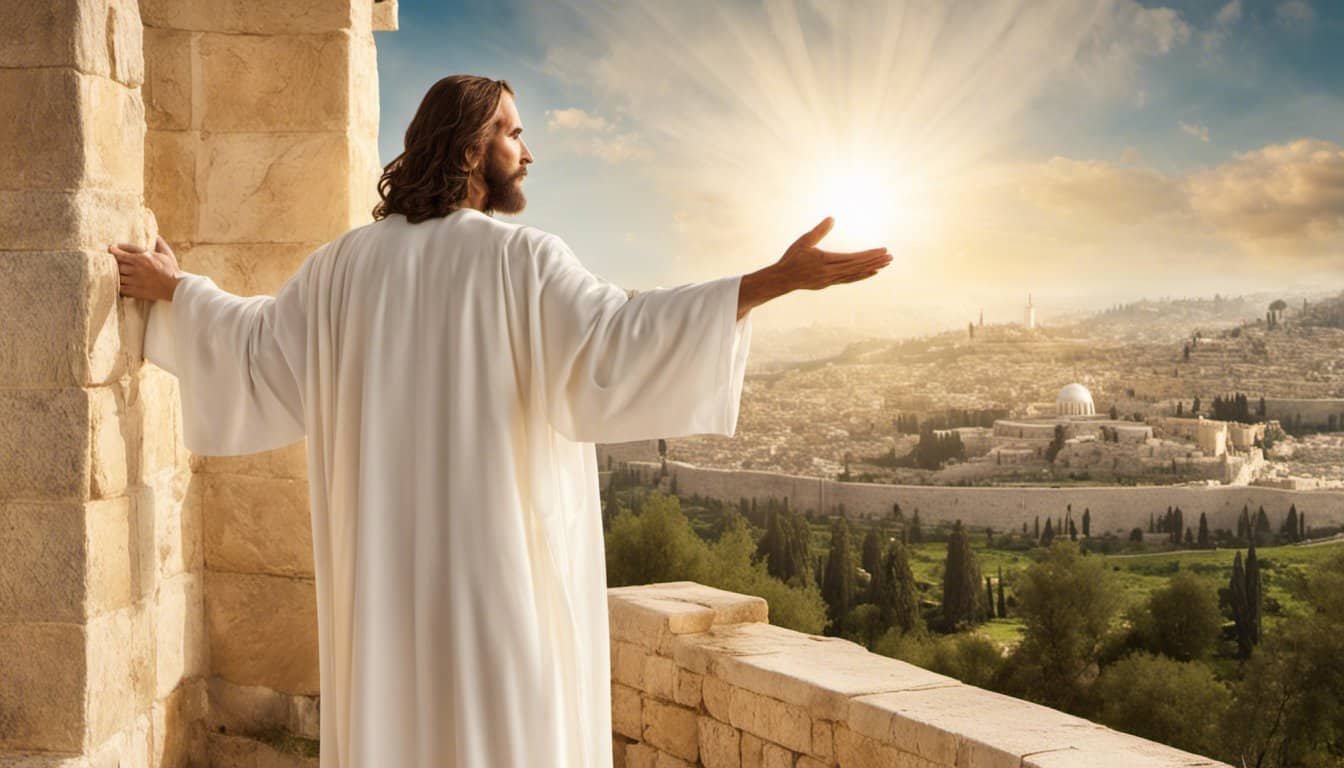The holiday of Christmas has become an integral part of our cultural and religious heritage, celebrated by millions of people worldwide every year. But what is the true meaning of Christmas? Let’s explore the history and traditions behind this festive holiday, and delve into the religious and cultural significance of Christmas, from its origins as a pagan celebration to the birth of Christ. We’ll also take a closer look at the spirit and values, such as love, joy, and peace, that make Christmas such a special time of year, and investigate the commercial and materialistic side of this annual celebration. Join us on this journey of discovery and rediscover the true meaning of one of the most beloved holidays around the world.
The Origins of Christmas: From Pagan Celebrations to Christian Tradition

Christmas is one of the most widely celebrated holidays around the world. However, the history of the holiday dates back thousands of years and has gone through many changes. Most people are familiar with the Christian story of the birth of Christ, but the roots of Christmas go back centuries before the birth of Jesus. This section will explore the Pagan celebrations that influenced Christmas as we know it today, and how the holiday has evolved into a Christian tradition.
- Winter Solstice Celebrations:
The origins of Christmas can be traced back to Pagan winter solstice celebrations that were held in many parts of the world. The winter solstice marks the shortest day and longest night of the year, and was seen as an important time for feasting and celebrating. Pagans believed that during the solstice, the sun was reborn, and they celebrated with bonfires, feasts, and gift-giving.
- The Roman Festival of Saturnalia:

The Roman festival of Saturnalia, which celebrated the god Saturn, was also a major influence on Christmas. Saturnalia was a week-long festival that began on December 17th, during which time social norms and rules were relaxed. Slaves were given time off, and gift-giving, feasting, and merry-making were common.
The first recorded Christmas celebration was in Rome in 336 AD, under the rule of Emperor Constantine. It is thought that the early Christian church chose December 25th as the date to celebrate the birth of Christ in order to co-opt the Pagan and Roman festivals, and create a Christian tradition. Although it is not known exactly when Jesus was born, it is believed to have been in the spring.
- Early Christmas Celebrations:
The first Christmas celebrations were very different from the holiday as we know it today. They were simple and solemn, focusing on the religious aspects of the day. The primary purpose was to remember the birth of Christ, and there were no gift-giving or festive foods as we have now. It was only in the Middle Ages that Christmas started to take on the more secular elements that we recognize today.
- Conclusion:
From its humble beginnings as a winter solstice celebration, Christmas has evolved into one of the most important holidays in the Christian calendar. Though we may not fully agree with the religious elements of the holiday, we can still appreciate the sentimental and social traditions of gift-giving, food, and spending time with loved ones. Of course, it’s important to remember that the true meaning of Christmas varies depending on one’s religious beliefs.
The Birth of Christ: The Religious Significance of Christmas
The birth of Christ is the central foundation of Christmas, and it has religious significance for millions of people around the world. Christmas celebrates the birth of Jesus Christ, who was born more than 2,000 years ago in Bethlehem, a small town in Judea. In Christian tradition, Jesus is considered the Son of God, the savior of humanity, and the Messiah.
According to religious scriptures, Jesus was born to Mary, a young Jewish woman, who gave birth after being visited by an angel. Mary was betrothed to Joseph, a carpenter, who accepted Jesus as his son and raised him as his own. The birth of Jesus is celebrated on December 25th, although the exact date of his birth is unknown and debated among scholars.
For Christians, the birth of Jesus is a symbol of hope, love, and redemption. Jesus came to earth to show humanity the way of love and to sacrifice himself for humanity’s sins. The story of Jesus’ birth represents the ultimate sacrifice for human redemption and salvation.
In celebrating the birth of Jesus, Christians come together to attend mass or church services, sing hymns, and reflect on the meaning of Christmas. Families gather to celebrate and exchange gifts, which represents the gifts that the Three Wise Men offered to the baby Jesus. Sharing gifts represents our love and commitment to one another, as well as the expression of generosity and gratitude.
In every tradition, the celebration of Christmas reminds us of the importance of love and peace. While the Christmas season may bring materialistic celebrations and commercialism, the essence of the holiday is the birth of Christ, which inspires us to be better people and to show love and kindness to everyone around us.

Overall, the birth of Christ is the cornerstone of the religious significance of Christmas, reminding us of the true reason for the season. It is a time to come together with family and friends, to appreciate all of life’s blessings, and to reflect on the meaning of spirituality, sacrifice, and love.
Christmas Traditions: From Gift Giving to Festive Foods
Christmas wouldn’t be complete without its many traditions, passed down from generation to generation and celebrated across the world. From decorating the Christmas tree and hanging stockings to enjoying a big feast with loved ones, each tradition holds its own special significance and contributes to the holiday’s festive spirit.
One of the most beloved Christmas traditions is gift-giving. While the practice of giving presents on Christmas originated from the story of the Three Wise Men who brought gifts to baby Jesus, it has evolved into something much more. In modern times, gift-giving is a way to show love and appreciation for family and friends, and exchange thoughtful or amusing items that bring joy to the recipient.
Another important tradition of Christmas is the food. Many families have their own unique recipes and dishes they prepare during the holiday season. For example, roasted turkey or ham, mashed potatoes, stuffing, and cranberry sauce are common foods in the United States. In Italy, many people dine on a big feast of seafood on Christmas Eve, while in Mexico, tamales and sweet bread are popular.
Beyond these classic dishes, there are other foods and drinks that are synonymous with the Christmas season. Eggnog, mulled wine, hot chocolate, and candy canes are just a few examples. Additionally, many people enjoy baking cookies or gingerbread houses during the Christmas season, often with the help of family members and friends.
While gift-giving and festive foods are key components of the holiday season, they only scratch the surface of the many Christmas traditions celebrated around the world. From singing carols and attending church services to lighting candles and participating in nativity plays, each tradition contributes to the holiday’s special atmosphere of warmth, love, and joy.
« characteristics of a christian youth
Is Project 86 a Christian Band? Exploring the Band’s Faith-Based Roots »
As people celebrate Christmas, it’s important to remember the true meaning of the holiday and the spirit of giving that originally inspired these traditions. By spreading kindness, compassion, and generosity, we can truly honor this special time of year and make it a meaningful and unforgettable experience for everyone involved.
The Spirit of Christmas: Love, Joy, and Peace
The spirit of Christmas is often associated with feelings of love, joy, and peace. During this time of year, people come together to celebrate with family and friends, spreading cheer and happiness throughout their communities.
Love is one of the central themes of Christmas, as it marks the birth of Jesus Christ, who was sent to Earth as an expression of God’s unconditional love for humanity. The holiday season offers a chance to show love to those around us, expressing our feelings through thoughtful gestures, heartfelt words, and acts of kindness.
Joy is another prominent aspect of Christmas, with people experiencing feelings of happiness and contentment as they come together in celebration. The joy of Christmas can be seen in the twinkling lights and colorful decorations that adorn our homes, the laughter and merriment that fills the air during holiday gatherings, and the joy of giving and receiving gifts with loved ones.

Peace is also an important part of the Christmas holiday, as it symbolizes the hope for a world free from conflict, strife, and suffering. The message of peace can be found in the story of the Nativity, as well as in the carols we sing and the prayers we offer during this time of year.
Throughout the centuries, people have embraced the spirit of Christmas by adopting various traditions that embody the values of love, joy, and peace. From gift-giving to festive feasts, these customs are at the heart of what makes the holiday season so special.
As we celebrate Christmas, it is important to remember the true meaning of the holiday and to take time to reflect on the values that it represents. By embracing the spirit of love, joy, and peace, we can make a positive difference in the world and help bring about a brighter future for ourselves and future generations.
The Evolution of Saint Nicholas to Santa Claus
As time passed and Christmas traditions spread across different cultures and regions, many figures emerged to embody the holiday spirit and bring happiness to children. One such figure, and perhaps the most iconic, is Santa Claus.

Before he became the jolly man in a red suit, Santa Claus had his roots in early Christianity. Saint Nicholas, a fourth-century bishop in what is now modern-day Turkey, was known for his generosity to the less fortunate, especially children. He was said to have given gifts of gold to a poor family, and famously tossed bags of gold through a window to provide dowries for three young women. Because of his kindness and charitable nature, he became known as the patron saint of children.
The celebration of Saint Nicholas’ feast day on December 6th became very popular in Europe in the Middle Ages. On this day, children would leave their shoes out to be filled with small toys and treats by the saint. In many cultures, Saint Nicholas became known as something of a gift-giving figure.
Fast forward to the 19th century in America, where an anonymous poem appeared in a local newspaper. Known as “The Night Before Christmas,” the poem depicted a plump, cheerful man with a white beard who rode a sleigh pulled by flying reindeer and delivered presents to good children all over the world. This poem, along with the influence of Dutch traditions and the commercialization of Christmas, helped to transform the figure of Saint Nicholas into the modern-day Santa Claus.
The popular image of Santa Claus as a rotund, bearded, red-suited character originated in a series of illustrations by caricaturist Thomas Nast, published in Harper’s Weekly in the late 1800s. Nast provided the lasting image of Santa Claus with his ruddy face, twinkling eyes, flowing white beard, and red suit trimmed with white fur.
The myth of Santa Claus, or Father Christmas, varies from country to country, but the common thread is that of a benevolent gift-bringer who rewards good behavior and promotes goodwill and cheer during the Christmas season. While the commercialization of Christmas has led many to regard Santa Claus as a symbol of materialism, his origins and the stories of Saint Nicholas remind us that the true meaning of Christmas lies in generosity, kindness, and love towards others.
Commercialization of Christmas: The Materialistic Side of the Holiday

As Christmas approaches, we can easily see the commercialization of the holiday. Many retailers put up festive decorations and display so many products for shoppers to buy. The societal pressure to buy gifts and spend money can leave people feeling stressed, overwhelmed, or even in debt. However, the origins of Christmas have little to do with the material aspect of the holiday.
The commercialization of Christmas can make it difficult to focus on its true meaning. Instead of a celebration of love, peace, and faith, Christmas can be more about buying the perfect gift, receiving material goods, and spending extravagantly. The emphasis on materialism can take away from the spiritual and symbolic nature of the holiday.
Although the commercialization of Christmas doesn’t show us the true meaning of the holiday, it can still contribute to the festive atmosphere of the season. For example, exchanging gifts has become a well-loved tradition associated with Christmas, where loved ones can show their appreciation for each other. Furthermore, the act of gift-giving can invoke feelings of caring, kindness, and affection.
However, it’s important to remember that this season should also be about spending quality time with family and loved ones. It’s a time to honor the great sacrifice that Christ made for humanity, to share love with others, to enjoy laughter and make memories together. When we focus solely on the commercial elements of Christmas, we miss the chance to experience its true meaning and significance.
In summary, while purchasing gifts and seeing an abundance of Christmas decorations can be fun, it can also detract from the spiritual significance of the holiday. The commercialization of Christmas should not be the sole focus of the season. Instead of a materialistic mindset, we should aim to create meaningful experiences and cherish the love and joy that come with spending time with those dear to us.
Rediscovering the True Meaning of Christmas: Reflection and Action

As Christmas approaches with its bright lights, wrapped gifts, and Santa hats, it can be easy to forget the holiday’s true essence. Beyond the commercialized depictions of a merry season lies the core message of Christmas—love, peace, and faith. Here are some ways to rediscover the true meaning of Christmas through reflection and action.
- Connect with loved ones and friends:
Christmas is a season for togetherness. Take some time to connect with family and friends, whether it’s through a video call or an in-person gathering. Strengthening relationships can remind us of the importance of love and its power to heal.
- Volunteer:
Helping others is a wonderful way to embrace the spirit of Christmas. Consider volunteering at a local shelter or donating to a charity that aligns with your values. Giving to those in need can nurture feelings of compassion and empathy.
- Practice gratitude:
Gratitude is a powerful emotion that can promote positivity and reduce stress. Take some time to reflect on what you’re thankful for this Christmas season, whether it’s a loving family, supportive friends, good health, or a warm home. Gratitude can bring peace and joy during stressful times.
- Attend a religious service:
For those who celebrate Christmas as a religious holiday, attending a church service can help re-center on the birth of Christ and its significance. It’s a time to reflect on the sacrifice and redemption that Christ represents and to strengthen faith in humanity.
- Simplify gift-giving:

The commercialized side of Christmas can often overshadow its true message. Instead of focusing on buying expensive gifts, consider simplifying your gift-giving by offering homemade presents, spending quality time with loved ones, or donating to a charity in someone’s name. Christmas isn’t about material possessions, but about the priceless moments we share with others.
As the holiday season approaches, it’s essential to take some time to reflect on its true meaning. By embracing love, peace, and faith, and taking actions to spread positivity, we can all rediscover the essence of Christmas.












